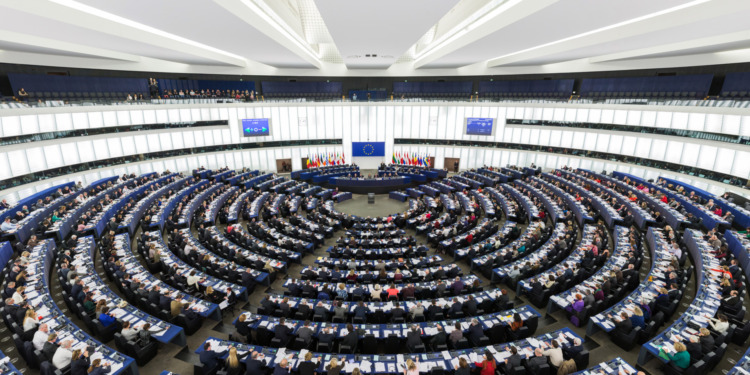Since her first speech as President of the European Commission, Ursula von der Leyen has taken a bold stance on military issues. Following Russia’s invasion of Ukraine in February 2022, she has worked to strengthen defence integration among EU member states. Then came Donald Trump.
In his early weeks as the 47th President of the United States, he made it clear that Europe could no longer take American military support for granted. In this context, on March 3, 2025, von der Leyen unveiled an ambitious plan originally called Rearm Europe, later rebranded as Readiness 2030 following objections from Italy and Spain.
The initiative, which seeks to unlock up to €800 billion for national defence budgets, was accompanied by a White Paper outlining realistic short- and long-term goals to reduce European dependence on US protection.
The proposal has sparked mixed reactions across the continent, both among governments and the public. In Italy, Prime Minister Giorgia Meloni voiced concerns, particularly about financing military expenditure through debt. By contrast, Germany’s Chancellor-designate Friedrich Merz secured Bundestag approval for a €1 trillion increase in military spending over the next decade.
This raises a critical question about whether Europe truly is shifting its defence strategy. To assess this, it is necessary to examine two key documents: the Security Action for Europe (SAFE) and the White Paper on European Defence Readiness 2030.
Something that money can’t buy
The EU’s SAFE programme provides up to €150 billion in loans for joint arms procurement and allows member states to bypass fiscal constraints and to exceed the stability pact to boost defence spending. Under the “spend more, spend better” approach, the Commission aims to both increase national military budgets and consolidate the European Defence Technology and Industrial Base (EDTIB).
This strategy allows Brussels to leverage its strongest tool — economic incentives — while avoiding direct clashes with national governments. The Commission’s vision is to foster European cooperation to strengthen collective defence capabilities and support domestic arms industries. Joint procurement, in particular, is crucial to enhancing interoperability, reducing duplication and consolidating Europe’s fragmented defence market.
Despite the unprecedented scale of resources committed — remarkable by EU standards — the likelihood of achieving these objectives remains uncertain. There are three key reasons for this scepticism.
First, the Commission has long sought to use financial incentives to drive military investment, as seen in SAFE and previous initiatives like the European Defence Fund (EDF). Yet according to the European Defence Agency (EDA), the EDF took five years to make a meaningful financial impact. Moreover, procurement data shows that while spending has increased since 2022, much of it has gone towards off-the-shelf weapons rather than collaborative projects.
Second, financial incentives alone are unlikely to drive joint procurement. While national governments and parliaments control military budgets, two other key players — defense firms and the armed forces — have different priorities. Defence companies must negotiate workshare agreements, often leading to protracted disputes. Meanwhile, military services across Europe have distinct operational requirements, making standardisation difficult. Despite commitments to allocate at least 20% of procurement spending to joint programmes, the actual figure remains just 6%.
Third, as defence economist Keith Hartley has observed, budgets measure input, not output. Increased spending and greater efficiency are necessary but not sufficient to guarantee military effectiveness. The real test of these initiatives will be whether they translate into credible deterrence and defence capabilities against external threats.
Searching for a vision
At least in principle, the White Paper seeks to address these concerns, recognising that military spending is a means to an end rather than an objective in itself. It sets out both short- and medium-term goals, with a focus on supporting Ukraine, closing capability gaps, and strengthening European security.
To achieve this, it prioritises key areas such as air and missile defence, artillery systems, ammunition stockpiles, drone technology, military mobility, and advancements in artificial intelligence, cyber warfare, and electronic warfare. It also emphasises the need to enhance strategic enablers and protect critical infrastructure.
Beyond capability development, the document proposes measures to reinforce the European Defence Technology and Industrial Base (EDTIB). These include efforts to boost demand for European defence production, secure supply chains, establish a common defence market, simplify bureaucratic processes, drive innovation, and attract skilled talent.
While these ambitions are logical and align with previous strategy papers, they are not entirely new. Similar initiatives have been pursued in the past, notably through the European Capabilities Action Plan (ECAP) in the early 2000s, and more recently in the 2022 Strategic Compass. Given the limited success of these earlier efforts, it remains to be seen whether the White Paper will deliver more tangible results.
Related Articles: From ReArm Europe to Readiness 2030: What’s Behind the Words | Rubio Urges NATO to Bolster as US Reaffirms Commitment to Alliance | Omnibus Package: Approved by EU Council, the EU Parliament Is Next
As the document itself highlights, timing is another crucial factor. Some objectives, such as increasing artillery stockpiles, can be achieved relatively quickly. Others, particularly the development of next-generation weapon systems, require a decade or more of sustained investment, making long-term planning and resource allocation essential. Mismanagement in this area could significantly delay or even derail key programmes.
Ultimately, defence policy is a function of foreign policy, and while the European Commission may push for greater military integration, member states continue to pursue their own strategic priorities. As a result, these initiatives are unlikely to lead to full European defence integration. At best, they may encourage limited convergence among certain countries on specific capabilities, but this falls short of the broader ambition of a truly unified European defence framework.
A political achievement
From a military standpoint, the Commission’s approach appears fraught with uncertainties and hurdles. While its long-term vision is ambitious, there are doubts over the feasibility of achieving the desired military-industrial capabilities.
That said, the immediate implications of Rearm Europe should not be underestimated. The initiative serves a diplomatic purpose, targeting two key external actors: the United States and Russia.
In the case of Washington, the focus on boosting the defence budget seems designed to meet the US President’s demands and avoid a diplomatic crisis at the upcoming NATO summit. Meanwhile, in relation to Moscow, the goal appears to be demonstrating a deterrent capability, whether for defence or retaliation — though its effectiveness remains unclear without direct US involvement.
No European leader would want to test these military capabilities in a real combat scenario. However, most would likely be willing to invest significant sums to avoid such a situation. Paradoxically, then, Rearm Europe’s most notable achievement may be political, rather than military in nature.
** **
This article was originally published by 360info™.
Editor’s Note: The opinions expressed here by the authors are their own, not those of Impakter.com — In the Cover Photo: The Hemicycle of the European Parliament in Strasbourg during a plenary session in 2014. Cover Photo Credit: Wikimedia Commons.










